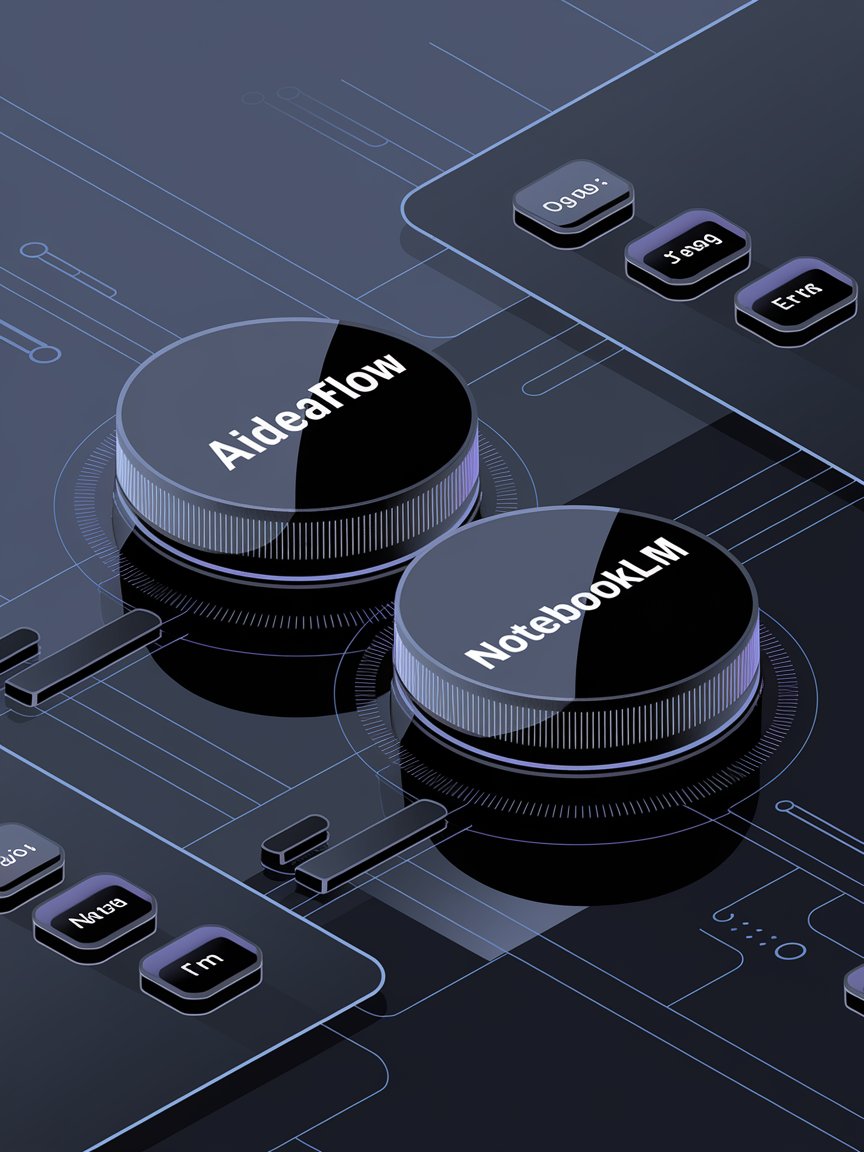
Top 5 Limitations of NotebookLM vs AIdeaFlow: A Comparative Analysis
In the rapidly evolving landscape of artificial intelligence, content creation tools like NotebookLM and AIdeaFlow are transforming the way we develop and consume information. While both platforms leverage AI to enhance productivity and creativity, they cater to different needs and audiences. NotebookLM, primarily focused on note-taking and organization, faces limitations when compared to AIdeaFlow, which specializes in generating AI-powered podcasts and audio content. In this blog post, we will explore the top five limitations of NotebookLM compared to AIdeaFlow, shedding light on their respective strengths and weaknesses.
Understanding NotebookLM
NotebookLM is an AI-driven note-taking application designed to help users organize their thoughts, ideas, and research. It provides a structured environment for writing and offers features like:
- Text Organization: Users can categorize notes, making it easier to navigate complex topics.
- Search Functionality: NotebookLM allows for quick search capabilities, enabling users to find specific notes efficiently.
- Integration with Other Tools: It can often integrate with other productivity tools, enhancing its usability.
Despite these features, NotebookLM has limitations that can hinder its effectiveness in content creation compared to AIdeaFlow.
What is AIdeaFlow?
AIdeaFlow is a cutting-edge platform designed for creating AI-powered podcasts and audio content. It stands out due to its unique features aimed at enhancing audio production, including:
- Voice Synthesis: AIdeaFlow can generate diverse voice outputs, making it possible to create engaging audio content without needing a human voice.
- Content Generation: The platform utilizes advanced algorithms to generate scripts and outlines for podcasts, saving time and effort in content creation.
- User-Friendly Interface: With an intuitive design, users can easily navigate the platform and produce high-quality audio content swiftly.
Limitation 1: Audio Content Creation
NotebookLM's Constraints
- Text-Focused: NotebookLM primarily focuses on text, making it less suitable for audio content creation.
- Limited Voice Features: Unlike AIdeaFlow, it does not offer voice synthesis or audio integration features.
AIdeaFlow's Advantage
- Podcast Generation: AIdeaFlow specializes in creating podcasts, allowing users to convert scripts into engaging audio content seamlessly.
- Diverse Voice Options: Users can choose from various voice styles, enhancing the listening experience.
Limitation 2: User Engagement
NotebookLM's Challenges
- Static Content: The text-based nature of NotebookLM does not engage users in the same way audio content does.
- Lack of Interactivity: Users cannot easily interact with their notes or share them in a dynamic format.
AIdeaFlow's Strength
- Engaging Audio Format: Audio content is inherently more engaging, allowing listeners to consume information while multitasking.
- Community Features: AIdeaFlow often includes community engagement tools to foster interaction among users.
Limitation 3: Content Versatility
NotebookLM's Restrictions
- Niche Focus: It is primarily designed for note-taking, which limits its applicability in broader content creation contexts.
- Minimal Multimedia Support: NotebookLM does not support various content types like video or audio.
AIdeaFlow's Flexibility
- Multimedia Integration: AIdeaFlow supports various formats, enabling users to incorporate sound effects, music, and more into their podcasts.
- Flexible Content Formats: Users can produce episodic content, interviews, and discussions, enhancing creative possibilities.
Limitation 4: Collaboration Features
NotebookLM's Limitations
- Limited Collaboration Tools: Collaboration features are often lacking, making it difficult for teams to work together effectively.
- No Real-Time Editing: Users cannot edit notes collaboratively in real time, which can hinder productivity.
AIdeaFlow's Collaboration Capabilities
- Team Collaboration: AIdeaFlow allows multiple users to work on the same project, facilitating teamwork.
- Real-Time Feedback: Users can share projects easily and provide instant feedback, improving the content creation process.
Limitation 5: Learning Curve
NotebookLM's Complexity
- Steep Learning Curve: New users may find NotebookLM's array of features overwhelming, leading to a slow adoption rate.
- Documentation Gaps: Users often report that the documentation does not fully cover all features or provide sufficient guidance.
AIdeaFlow's Accessibility
- User-Friendly Interface: AIdeaFlow is designed to be intuitive, making it easier for new users to get started.
- Comprehensive Tutorials: The platform often provides extensive tutorials and support resources to help users maximize their experience.
Conclusion
While both NotebookLM and AIdeaFlow offer unique features tailored to different audiences, NotebookLM faces several limitations when compared to AIdeaFlow, particularly in the realms of audio content creation, user engagement, content versatility, collaboration features, and ease of use. For users looking to create dynamic audio content, AIdeaFlow stands out as the more robust choice. Conversely, those seeking to organize notes and information may find value in NotebookLM, albeit with its limitations in collaborative and multimedia capabilities. Ultimately, the choice between these platforms will depend on individual needs and preferences, making it essential for users to assess their requirements carefully.
As technology continues to advance, it will be interesting to see how both platforms evolve and address their limitations, potentially leading to a more integrated and versatile approach to content creation in the future.